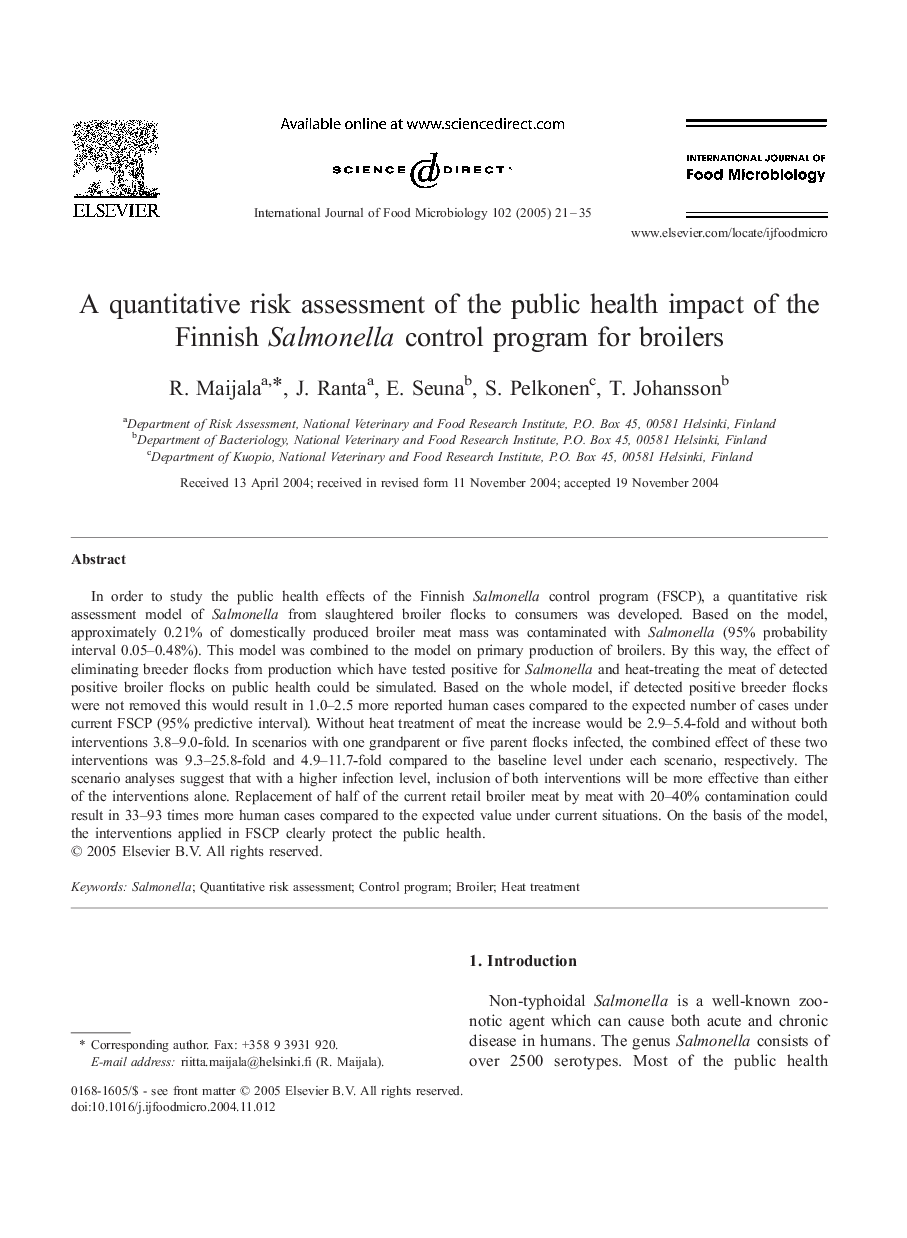| Article ID | Journal | Published Year | Pages | File Type |
|---|---|---|---|---|
| 10107413 | International Journal of Food Microbiology | 2005 | 15 Pages |
Abstract
In order to study the public health effects of the Finnish Salmonella control program (FSCP), a quantitative risk assessment model of Salmonella from slaughtered broiler flocks to consumers was developed. Based on the model, approximately 0.21% of domestically produced broiler meat mass was contaminated with Salmonella (95% probability interval 0.05-0.48%). This model was combined to the model on primary production of broilers. By this way, the effect of eliminating breeder flocks from production which have tested positive for Salmonella and heat-treating the meat of detected positive broiler flocks on public health could be simulated. Based on the whole model, if detected positive breeder flocks were not removed this would result in 1.0-2.5 more reported human cases compared to the expected number of cases under current FSCP (95% predictive interval). Without heat treatment of meat the increase would be 2.9-5.4-fold and without both interventions 3.8-9.0-fold. In scenarios with one grandparent or five parent flocks infected, the combined effect of these two interventions was 9.3-25.8-fold and 4.9-11.7-fold compared to the baseline level under each scenario, respectively. The scenario analyses suggest that with a higher infection level, inclusion of both interventions will be more effective than either of the interventions alone. Replacement of half of the current retail broiler meat by meat with 20-40% contamination could result in 33-93 times more human cases compared to the expected value under current situations. On the basis of the model, the interventions applied in FSCP clearly protect the public health.
Related Topics
Life Sciences
Agricultural and Biological Sciences
Food Science
Authors
R. Maijala, J. Ranta, E. Seuna, S. Pelkonen, T. Johansson,
